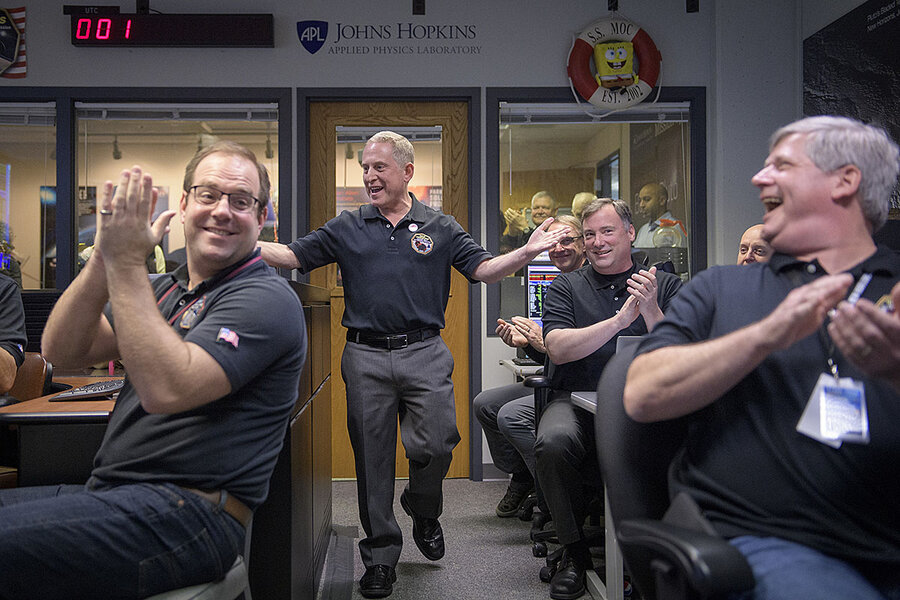A cosmic shift in our perspective
Loading...
This year marked two big anniversaries for American space exploration: 60 years since the United States launched its first satellite, and 50 years since the first crewed mission to the moon. Both achievements helped set in motion a cosmic shift in how we see ourselves.
The Explorer 1 satellite brought humanity the first glimpse of Earth in its cosmic context. And the Apollo 8 astronauts snapped the iconic “Earthrise” image of our blue world rising up over the lunar surface against the vast, inky cosmos.
In January, I wrote about how these images forever changed how we see ourselves. That perspective shift is now bearing interplanetary fruit. The children of the space age have grown up and are leading missions to unexplored places.
Alan Stern, who sat down with my colleague Amanda Paulson in June, was one of those inspired kids. Today, he is the principal investigator of NASA’s New Horizons mission to Pluto and beyond. The spacecraft is currently beginning science operations for its January 1 flyby of Ultima Thule – which will be the farthest encounter of a planetary object in history.
We may be on the verge of the next giant leap for humankind: crewed spaceflight beyond the moon. Space agencies and companies around the globe have outlined such goals for the next couple decades.
Becoming an interplanetary species would be another cosmic perspective shift for humanity, so you can count on Monitor reporters keeping a close eye on these developments. If there are any aspects of space exploration that you would like to learn more about, let me know: botkinkowackie@csmonitor.com.
Happy New Year!








